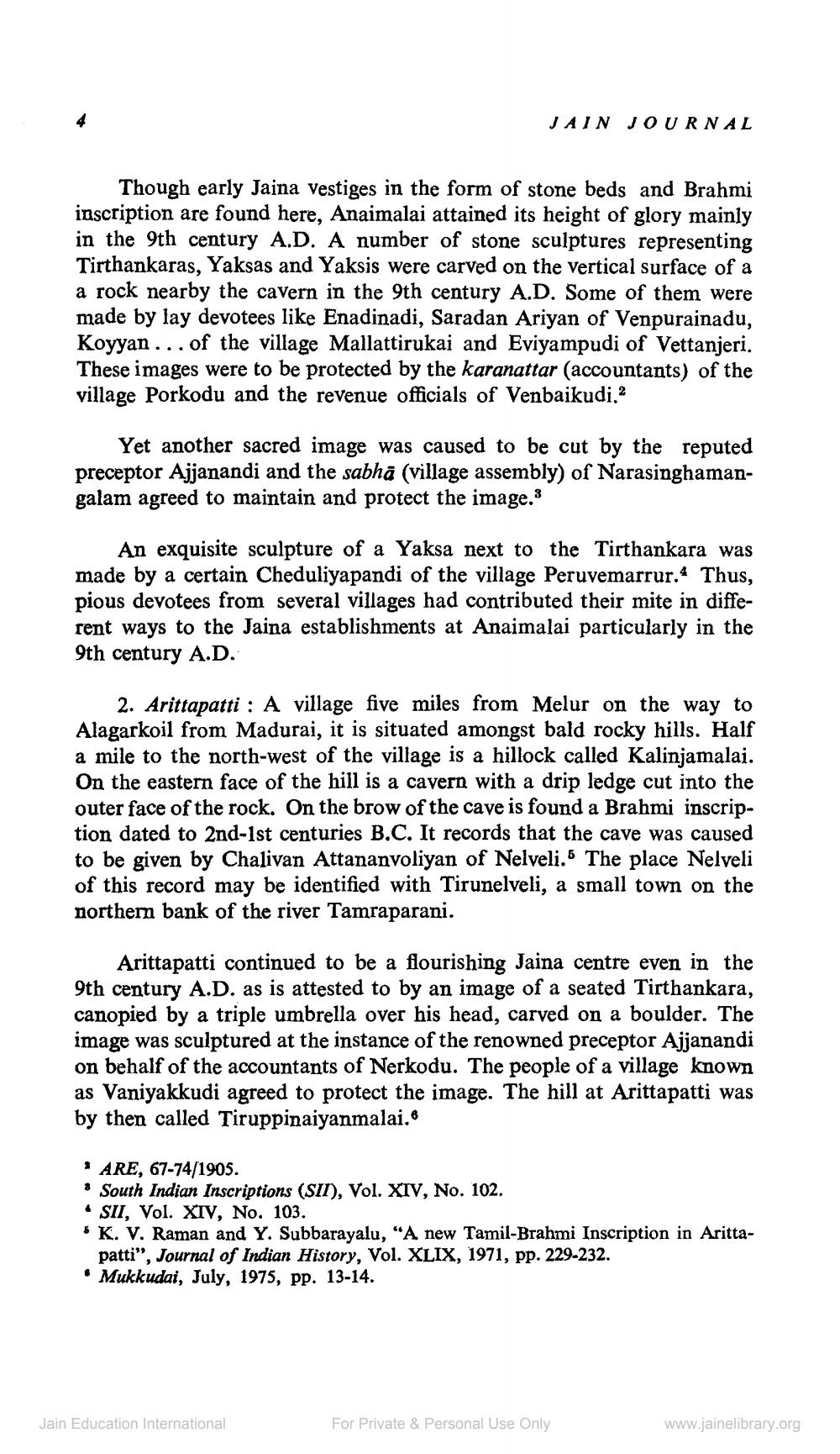________________
JAIN JOURNAL
Though early Jaina vestiges in the form of stone beds and Brahmi inscription are found here, Anaimalai attained its height of glory mainly in the 9th century A.D. A number of stone sculptures representing Tirthankaras, Yaksas and Yaksis were carved on the vertical surface of a a rock nearby the cavern in the 9th century A.D. Some of them were made by lay devotees like Enadinadi, Saradan Ariyan of Venpurainadu, Koyyan... of the village Mallattirukai and Eviyampudi of Vettanjeri. These images were to be protected by the karanattar (accountants) of the village Porkodu and the revenue officials of Venbaikudi.2
Yet another sacred image was caused to be cut by the reputed preceptor Ajjanandi and the sabhā (village assembly) of Narasinghamangalam agreed to maintain and protect the image.3
An exquisite sculpture of a Yaksa next to the Tirthankara was made by a certain Cheduliyapandi of the village Peruvemarrur. Thus, pious devotees from several villages had contributed their mite in different ways to the Jaina establishments at Anaimalai particularly in the 9th century A.D.
2. Arittapatti: A village five miles from Melur on the way to Alagarkoil from Madurai, it is situated amongst bald rocky hills. Half a mile to the north-west of the village is a hillock called Kalinjamalai. On the eastern face of the hill is a cavern with a drip ledge cut into the outer face of the rock. On the brow of the cave is found a Brahmi inscription dated to 2nd-1st centuries B.C. It records that the cave was caused to be given by Chalivan Attananvoliyan of Nelveli." The place Nelveli of this record may be identified with Tirunelveli, a small town on the northern bank of the river Tamraparani.
Arittapatti continued to be a flourishing Jaina centre even in the 9th century A.D. as is attested to by an image of a seated Tirthankara, canopied by a triple umbrella over his head, carved on a boulder. The image was sculptured at the instance of the renowned preceptor Ajjanandi on behalf of the accountants of Nerkodu. The people of a village known as Vaniyakkudi agreed to protect the image. The hill at Arittapatti was by then called Tiruppinaiyanmalai."
* ARE, 67-74/1905.
* South Indian Inscriptions (SII), Vol. XIV, No. 102.
• SII, Vol. XIV, No. 103.
* K. V. Raman and Y. Subbarayalu, "A new Tamil-Brahmi Inscription in Arittapatti", Journal of Indian History, Vol. XLIX, 1971, pp. 229-232.
• Mukkudai, July, 1975, pp. 13-14.
Jain Education International
For Private & Personal Use Only
www.jainelibrary.org




